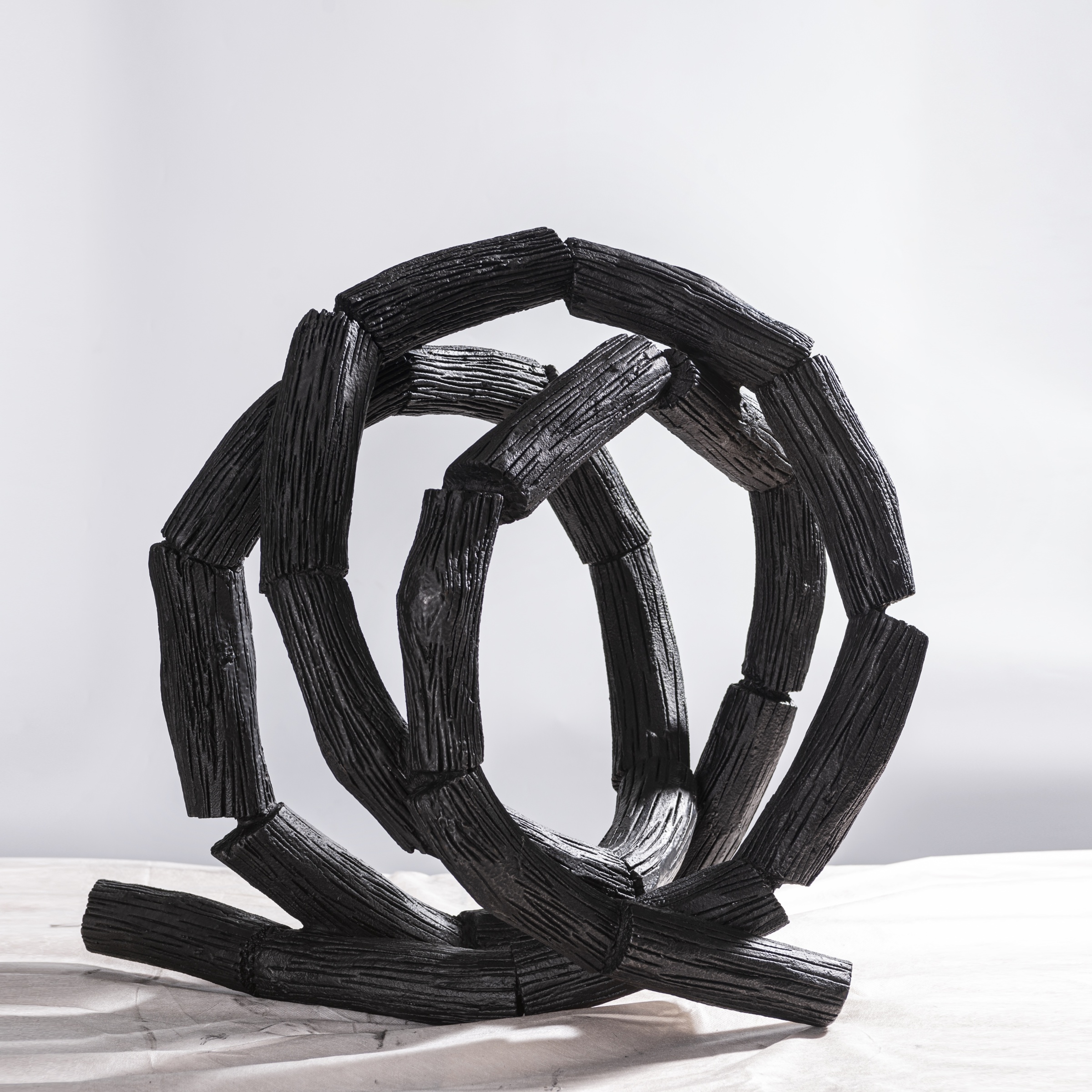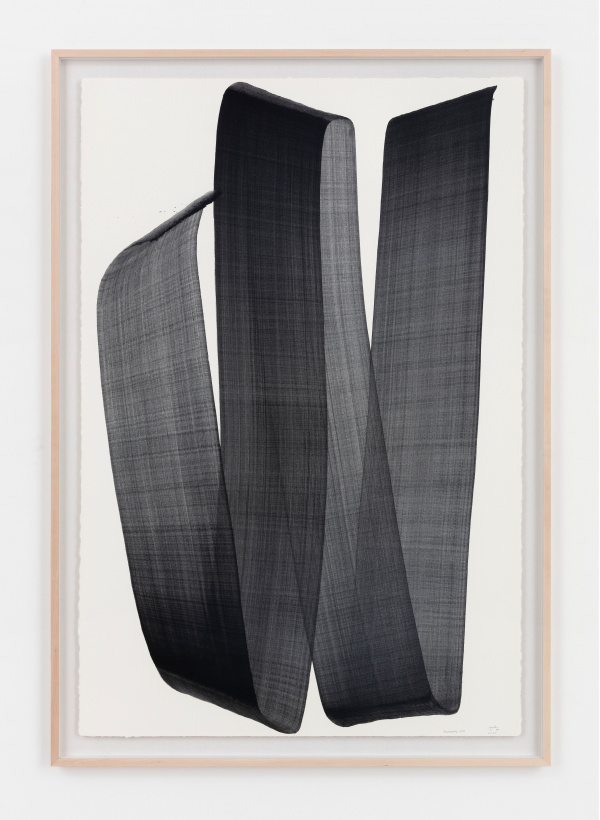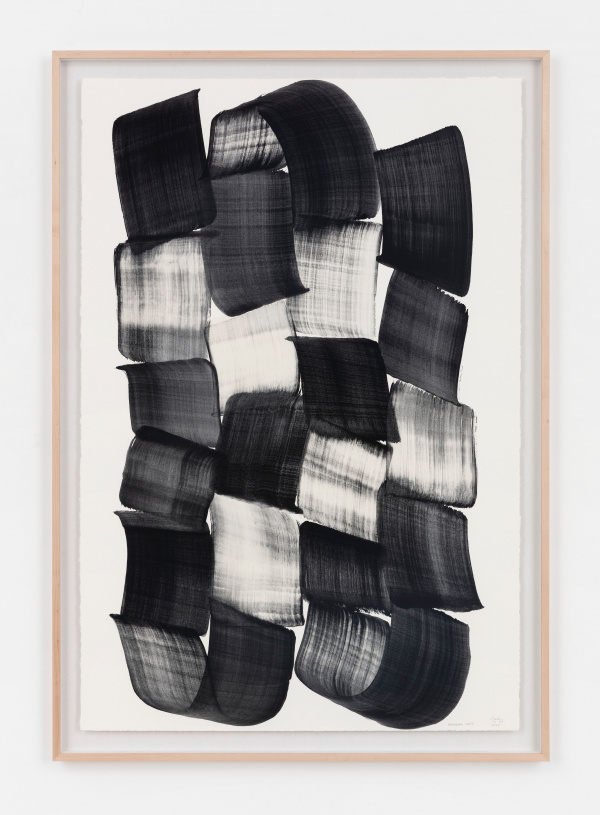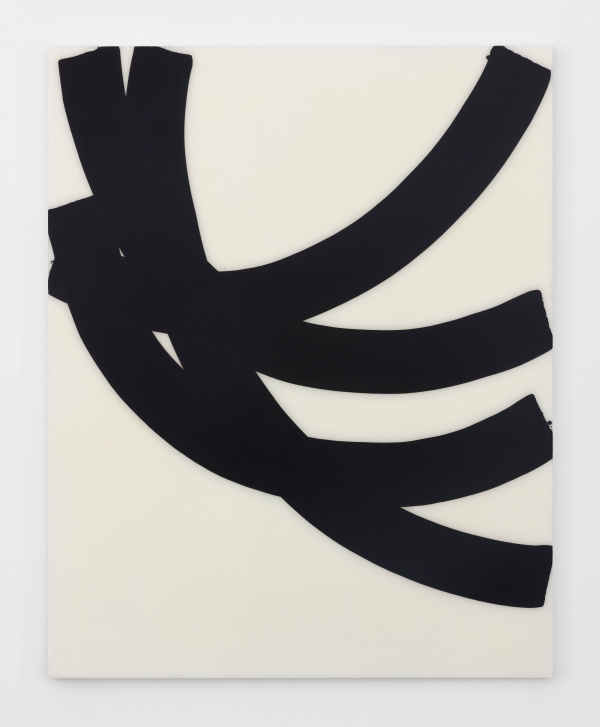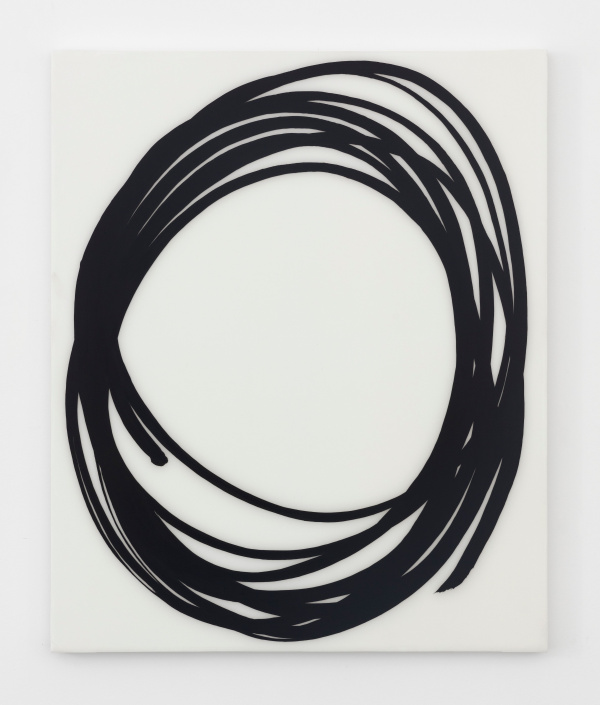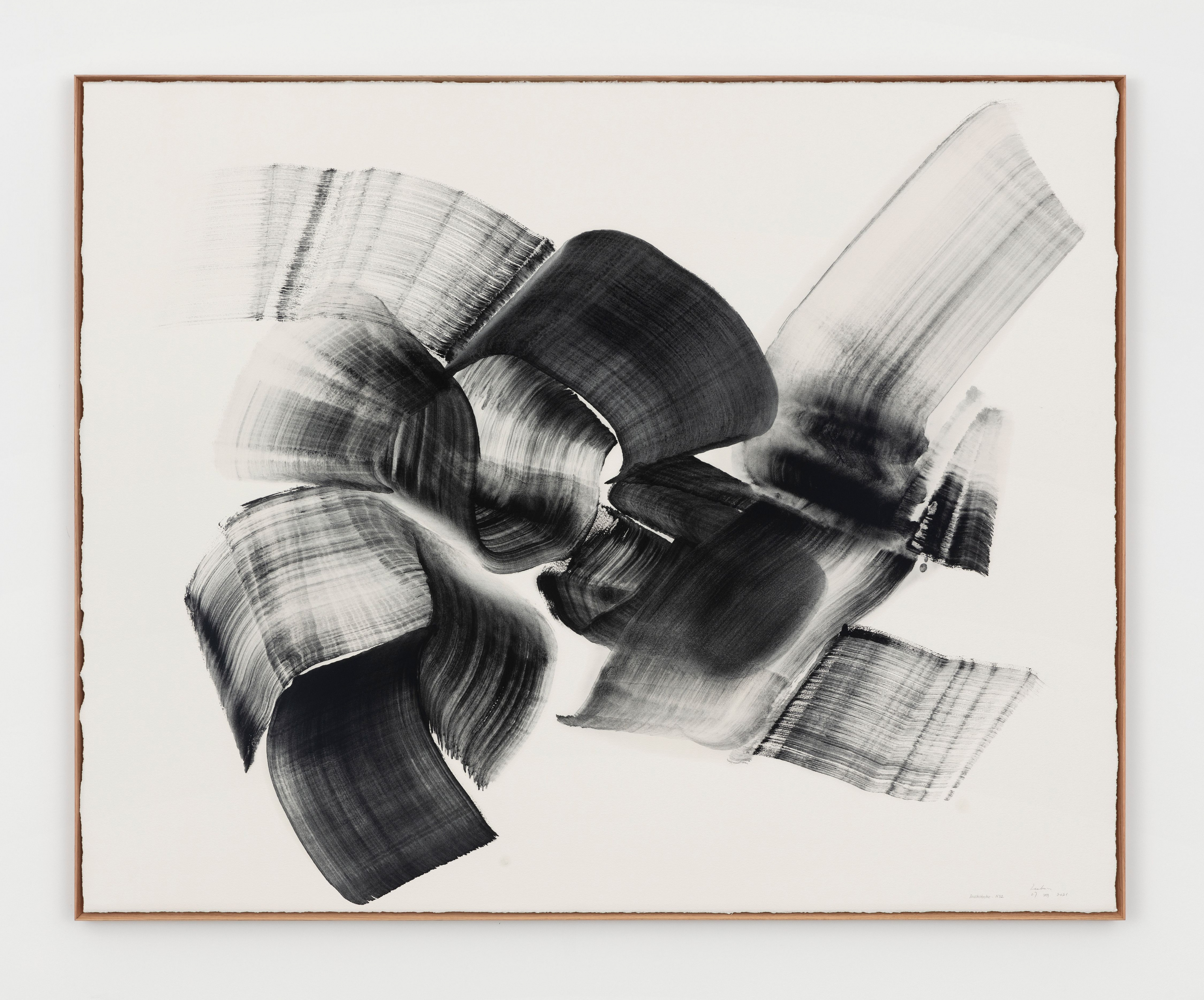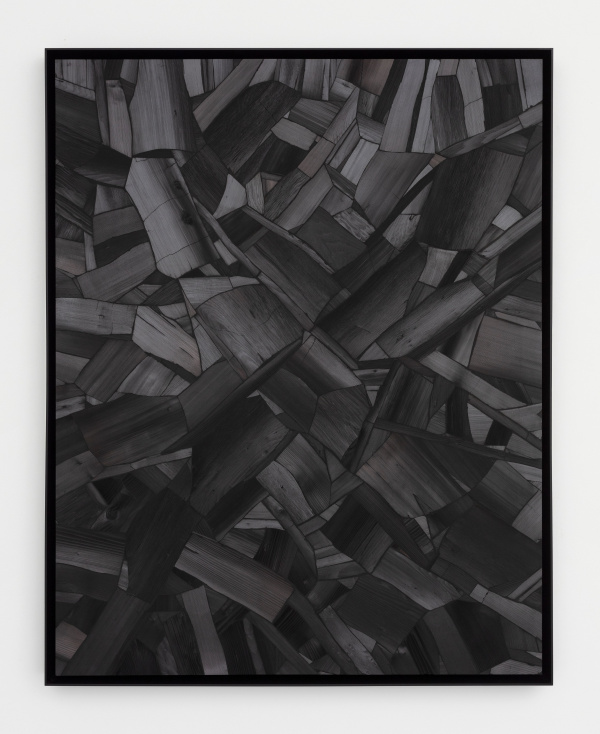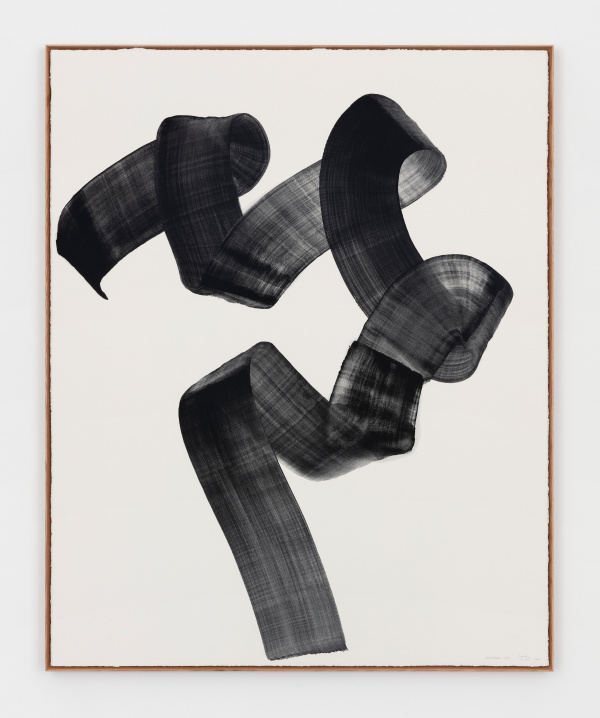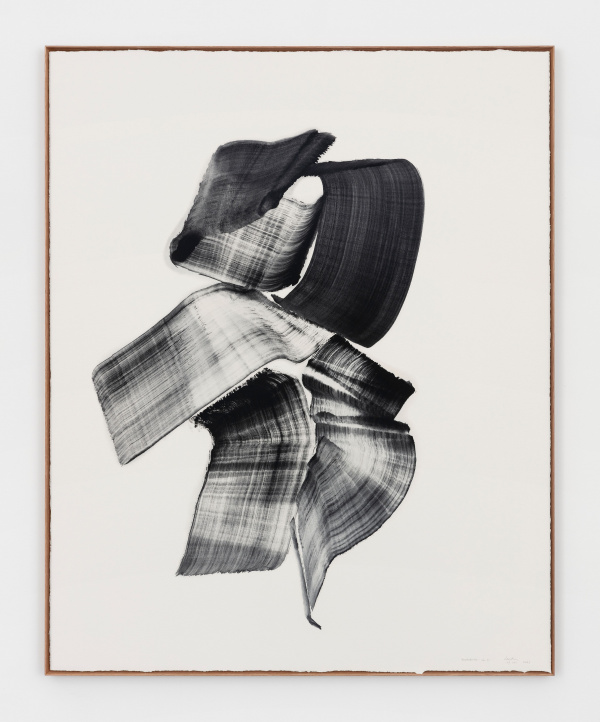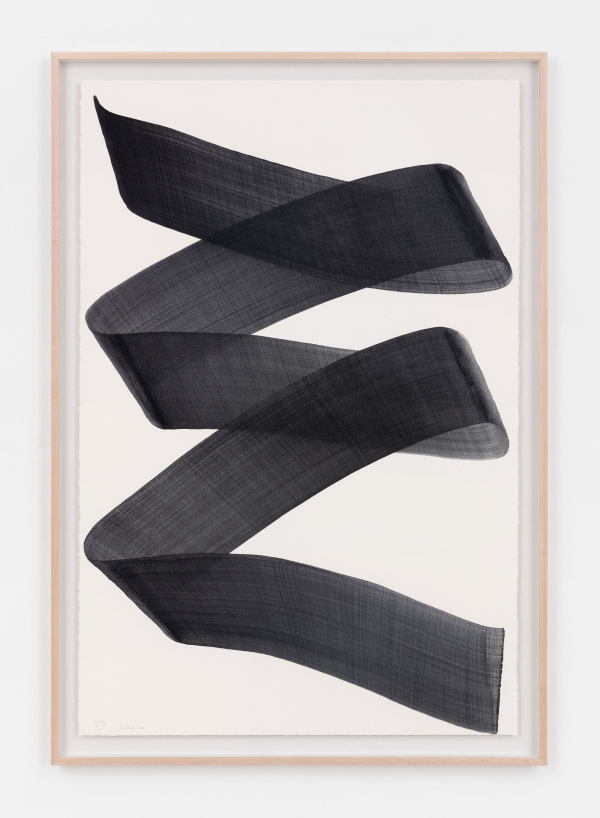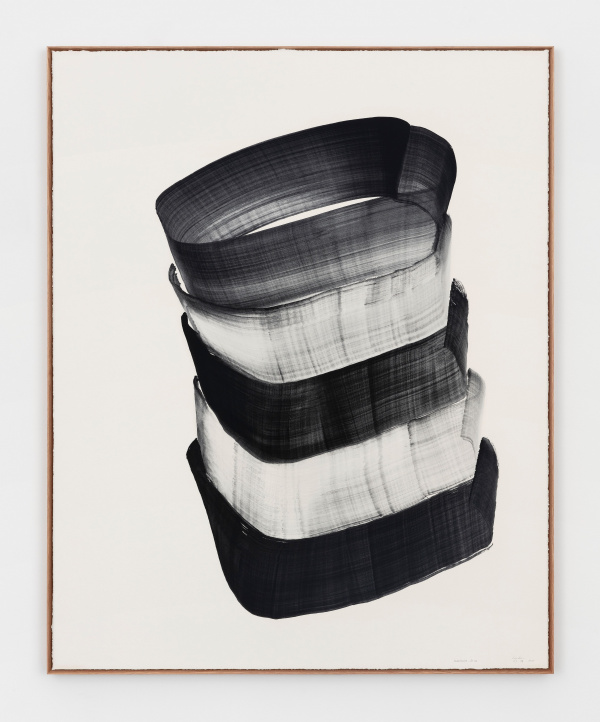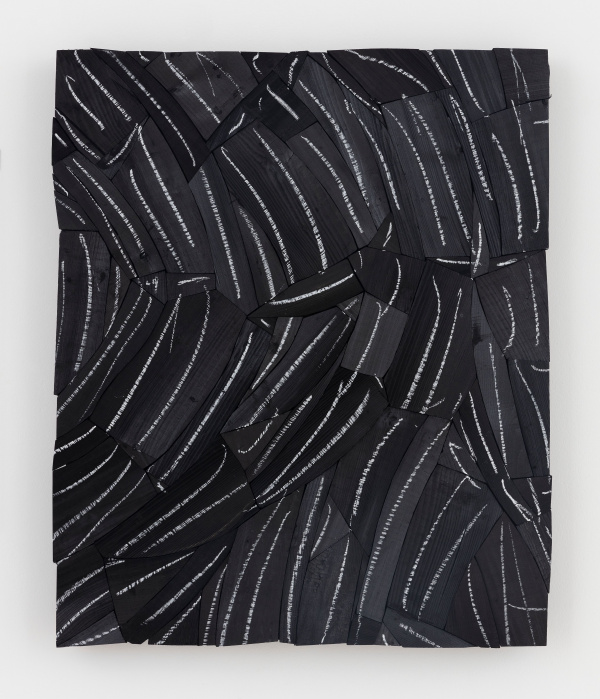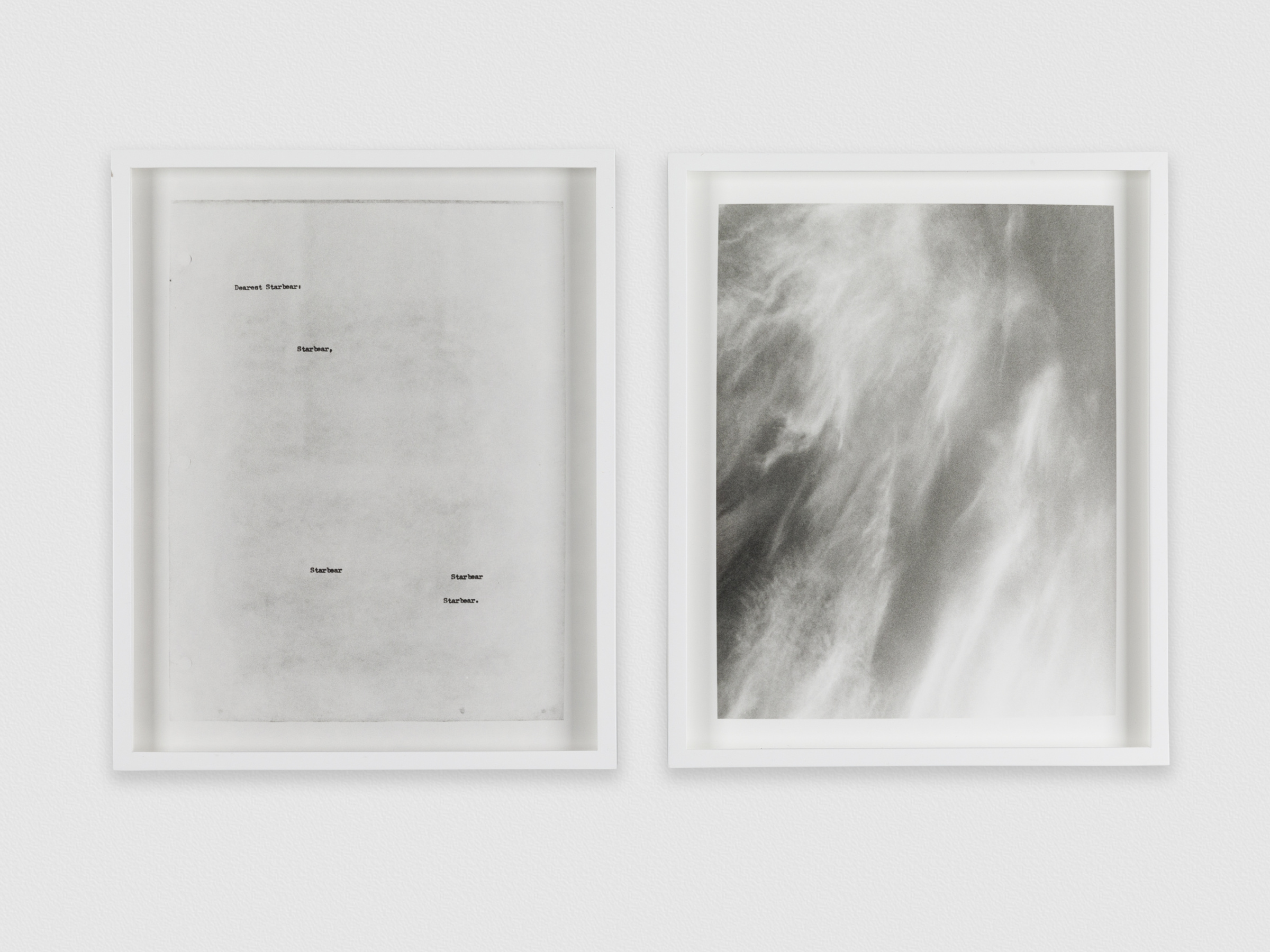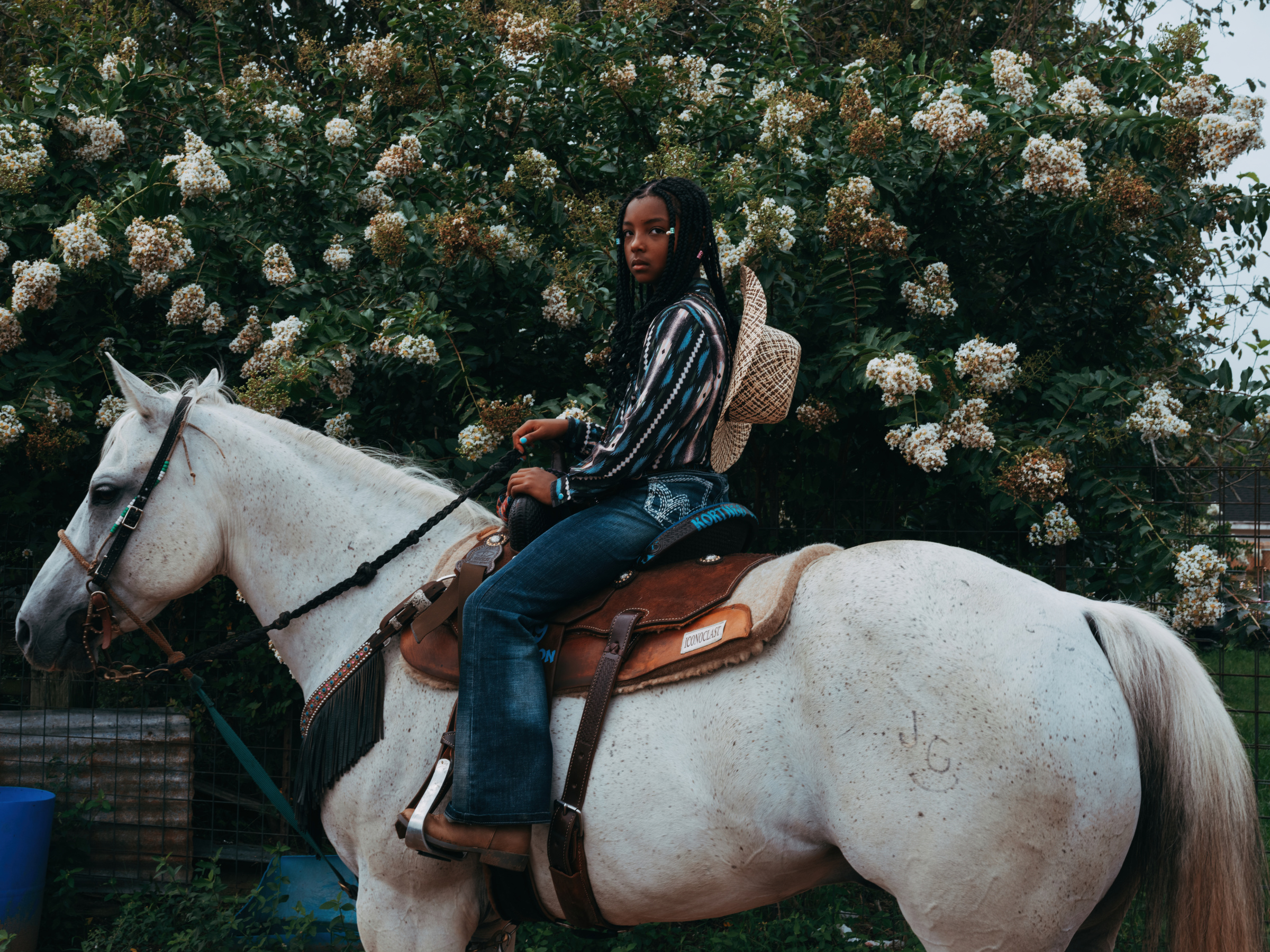When the artist Lee Bae sits down, he’s unmistakable—silver hair coifed to the side and dressed in a steel blue quarter-slip pullover. “Can you hear me clearly with the mask?” he asks in French, motioning to his black fabric face covering. He apologizes for the mask, mentioning recent contact case situations and Paris’ strict protocols.
Lee is spending the afternoon at Perrotin’s contemporary gallery in the Marais, which expands throughout three spaces in an 18th century mansion. Black in Constellation marks his second exhibition there, showcasing five series of paintings he’s created over the past 20 years, as well as an installation of half-burned charcoal stakes.
It’s hard to separate the material and the man, since charcoal has defined the artist since his move to Paris in 1990, when he bought a bag of charcoal as a cheap alternative to paint. He spent the next three decades exploring the ways charcoal could be used as an ink, paint, powder, and stakes in installations—an homage to his father, who was a poor farmer and worked with stakes in the fields. (He hoped Lee would take over the family farm, but he went on to study art in Seoul.). “I wanted to discover this material—which isn’t very expensive or fragile—in my own style, and now it seems charcoal is an integral part of me; there’s an exchange between me and this material that is symbolic with my culture.”
Lee was born in Cheongdo, South Korea and spends spring and summer at his studio there making charcoal in an igloo-shaped kiln with wood from surrounding trees. In Korea charcoal is seen as a purifier and believed to ward off evil forces, but the material is also cherished for its versatility and used for everything from fermentation (kimchi, soy sauce) to natural farming and calligraphy ink. “It’s not my material,” Lee clarifies. “I didn’t create it—it’s a material that comes from nature and is symbolic of nature.”
In Cheongdo Lee focuses on installations and sculptures, while at his Paris studio he paints from 6am until 4pm. Most days he’ll go through 50 sheets of paper sketching or drafting ideas with charcoal paint or India ink. “It’s like a ritual—following the same rhythm, constantly practicing,” he says, making it sound as soothing as meditation or yoga. “The morning is so calm you feel like you’re completely alone and can silence the world around you.”
Throughout the pandemic he couldn’t move as freely between his three homes (he also has a base in Seoul), so he stayed mostly in Cheongdo. His routine has also been switched up in Paris since he recently moved out of his 19th arrondissement studio. He’s currently working from his home in the 7th arrondissement, near the Eiffel Tower, while scouting for a larger atelier.
I ask Lee when he’s heading back to South Korea. He says he’s leaving in three days to prepare an exhibition and will return to Paris in mid-May. While his attention is on the next show, he’s also starting to explore possibilities for his work beyond the shades of black he’s embraced for so long now. “For 30 years I haven’t worked with color,” he says, almost as if he’s just realizing this. “But now, I want to unleash some of the colors of my interior, of my soul. I think about what it looks like when you ignite charcoal—it glows, there are flames, and there’s every color—except black.”
- Photo by Claire Dorn; Courtesy of Lee Bae and Perrotin.
- Photo by Claire Dorn; Courtesy of Lee Bae and Perrotin.
- Photo by Claire Dorn; Courtesy of Lee Bae and Perrotin.
- Photo by Claire Dorn; Courtesy of Lee Bae and Perrotin.
- Photo by Claire Dorn; Courtesy of Lee Bae and Perrotin.
- Photo by Claire Dorn; Courtesy of Lee Bae and Perrotin.
- Photo by Claire Dorn; Courtesy of Lee Bae and Perrotin.
- Photo by Claire Dorn; Courtesy of Lee Bae and Perrotin.
- Photo by Claire Dorn; Courtesy of Lee Bae and Perrotin.
- Photo by Claire Dorn; Courtesy of Lee Bae and Perrotin.
- Photo by Claire Dorn; Courtesy of Lee Bae and Perrotin.
A version of this article originally appeared in Sixtysix Issue 08 with the headline “Lee Bae.” Subscribe today.
